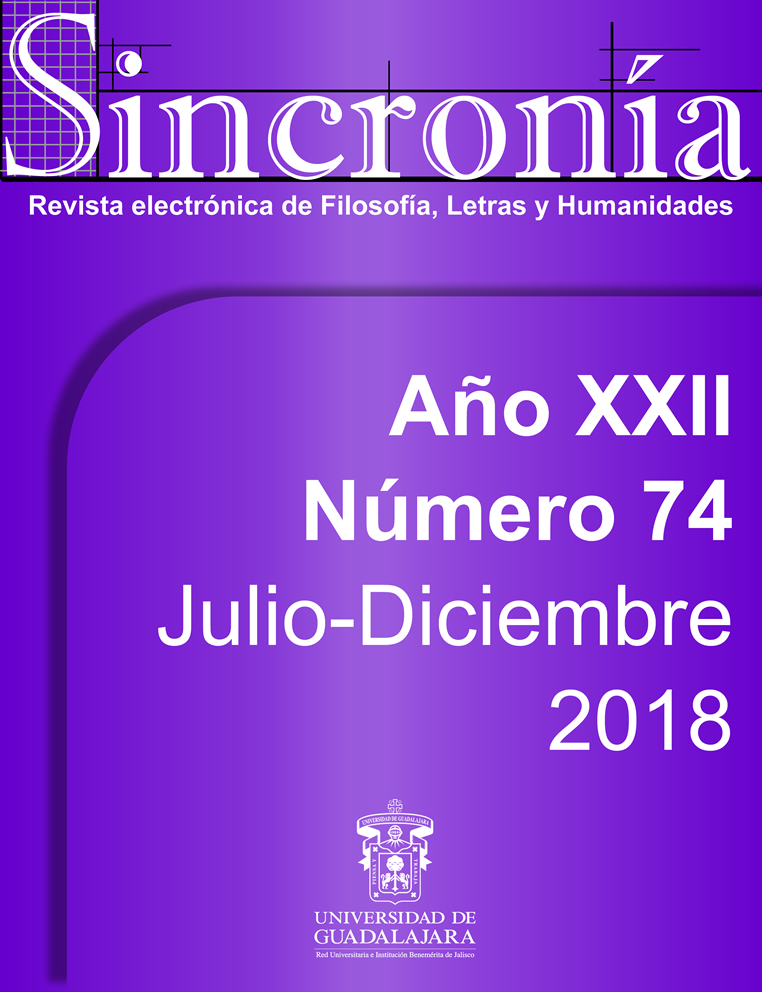Mysticism of the True Precolumbian Artist.
Keywords:
Mysticism, True artista, Initiatic process, Spiritual transformation, Flor y cantoAbstract
Mexican people are deeply mystical. To study in depth the path of its pre-Columbian artists is significant because it demands also an epistemological complex challenge requiring flexible structures firmly established, the meeting of various disciplines and a holistic special approach to historical phenomena. The way of the true artist was then a hard and long process, with dyes of an initiatic process. He ought to walk an extended distance in order to developing into an exceptional being that combined awareness of the Master, the world, nature and knowledge itself. Someone who goes through many thresholds before metamorphosing into a genuine artist. One, capable of dialoguing with God and his own self to become a magician, a shaman, a being powerful enough to transmute the word or matter.
Downloads
References
Charan-Sing, M. (2001). Introducción del libro Cartas Espirituales, Baba Jaimal Sing Ji, Radha Soami Satsang Beas, Málaga, España.
Da-Vinci, L. (1980), Tratado de pintura, 3ra ed., edición preparada por Ángel González García, Editora Nacional, Madrid.
Elíade, M. (1984). Prefacio del libro El Universo de Quetzalcóatl, Laurette Séjourné, Fondo de Cultura Económica, México, D.F., c1962, pp. VII-X.
Garibay, Á. M. (1965). Poesía Náhuatl II. Cantares mexicanos. Manuscrito de la Biblioteca Nacional de México.
Primera parte. UNAM. Colección Fuentes indígenas de la cultura náhuatl, Paleografía, versión, introducción y notas explicativas de Ángel María Garibay. México.
González, O. I. (1991), The Jade Lords, S/E, Coatzacoalcos, Veracruz.
Hernández, V. M. (2004). “Ángel María Garibay Kintana: La vida sencilla”, en El pensamiento latinoamericano del siglo XX ante la condición humana. Alberto Saladino García (coordr.) Versión digital a cargo de José Luis Gómez-Martínez, Disponible en línea: http://www.ensayistas.org/critica/generales/C-H/mexico/garibay.htm. (Consulta 2 de mayo, 2013).
León-Portilla, M. (1983). Los antiguos mexicanos a través de sus crónicas y cantares, 6ta reimp. FCE, México, c1961.
Melgar, J. M. (1869). “Primer reporte sobre un artefacto Olmeca”, en Seminario Ilustrado, México, D.F.
Morales, A. (2001-2002). “La creación de imágenes en la cultura maya”, Estudios Mesoamericanos, Núms. 3-4, enero 2001-diciembre 2002.
Navalón, N.; Mañas, A. & Cháfer, T. (2017). “Heroines in a Misogynistic Society. Teresa of Jesus Barricaded in the Mansion. Mysticism in Contemporary Art”, BRAC - Barcelona Research Art Creation , Vol. 5, No. 1, February 2017, pp. 17-44.
Porter, S. & Robinson, J. C. Hermeneutics, Eerdmans Publishing Co., Grand Rapids, 2011, pp.4-6.
Ros, C. (2011). Teresa de Jesús, esa mujer, Madrid: San Pablo.
Séjourné, L. (1984). El Universo de Quetzalcóatl, Fondo de Cultura Económica, México, D.F., c1962.
Tamayo, D. A. & Zapata, G. (2016) “Aportes psicológicos experimentales y neurobiológicos al estudio de la experiencia mística religiosa”, Revista Katharsis, Institucion Universitaria de Envigado, Colombia, N° 19, julio-diciembre 2016, pp. 169-198.
Van-Sertima, I. (1976). They Came Before Columbus. Random House.
Xu, H. M. (1996). Origin of the Olmec Civilization, University of Central Oklahoma Press.
Downloads
Published
How to Cite
Issue
Section
License
Copyright (c) 2018 Humberto Ortega-Villaseñor, Tibor Máhrik

This work is licensed under a Creative Commons Attribution-NonCommercial 4.0 International License.
You are free to:
- Share — copy and redistribute the material in any medium or format
- Adapt — remix, transform, and build upon the material
- The licensor cannot revoke these freedoms as long as you follow the license terms.
Under the following terms:
- Attribution — You must give appropriate credit , provide a link to the license, and indicate if changes were made . You may do so in any reasonable manner, but not in any way that suggests the licensor endorses you or your use.
- NonCommercial — You may not use the material for commercial purposes .
- No additional restrictions — You may not apply legal terms or technological measures that legally restrict others from doing anything the license permits.



























